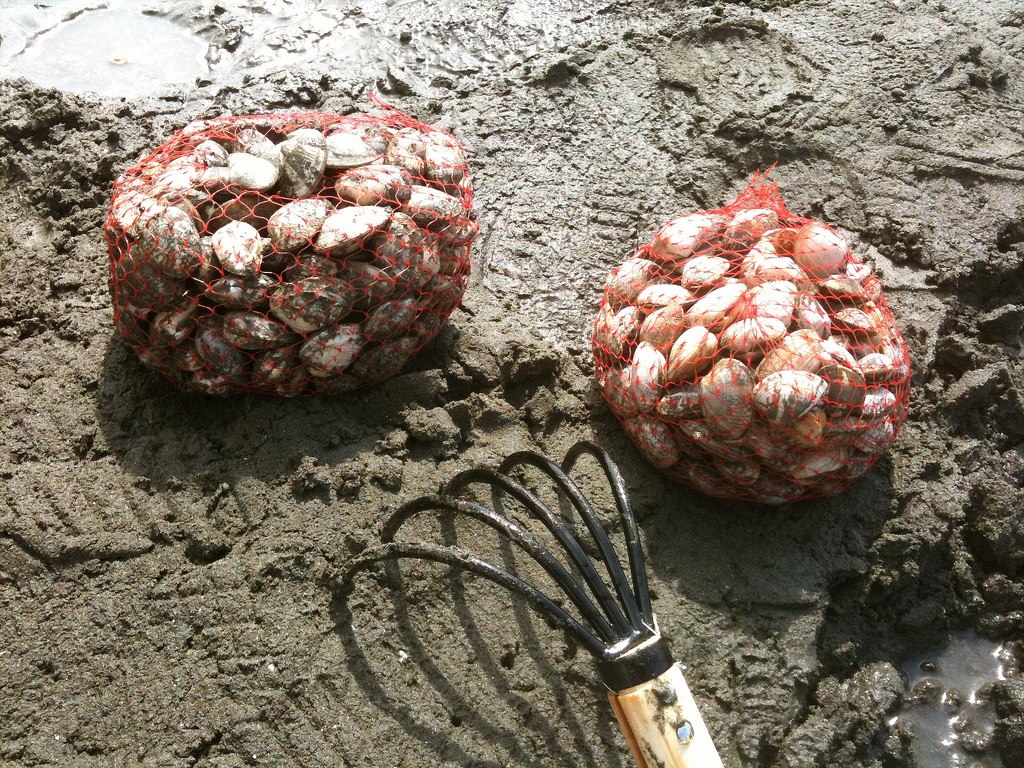Apr 28, 2023
The Hunt is Afoot! Clam Hunting with the Kids in Mikawa Bay near Nagoya
Clam hunting is a fun and educational activity that kids and adults alike can enjoy, especially in the beautiful Mikawa Bay area. Located in southern Aichi, Mikawa Bay has a rich and diverse marine life ecosystem, including a wide variety of clams popular for ‘hunting.’ This family-friendly activity is a fun way to spend time together and teaches children about the importance of preserving and respecting our natural resources.
A timeless tradition
Clam hunting has been a long-standing tradition in Mikawa Bay, dating back to ancient times when local fishermen and farmers relied on the sea for their livelihoods. During the Edo period (1603-1868), clam hunting became more organized, and special tools and techniques were developed to improve the efficiency of the harvest. This period saw the emergence of clam farmers, who would cultivate and harvest clams, contributing to the growth of the local economy.

In more recent times, shiohigari, literally ‘hunting in the tides’, has become a popular recreational activity in Mikawa Bay for both locals and tourists throughout the springtime. Families and groups can be seen scouring the sandy shores, equipped with shovels and buckets, to collect the various clams in the bay.
Aichi’s seas are home to many of Japan’s top seafood products, with more clams gathered in the area than any other prefecture in the country. Industrial clam fishing is banned within Mikawa Bay’s Rokujo tidal flats to protect the diverse ecosystem. However, to preserve the traditional custom, the flats are opened up to the public from April to June. Clam hunting remains an important part of Mikawa Bay’s culture and history and a beloved activity for those who visit the area.
How to clam hunt
As clams can only be foraged at low tide, practitioners of shiohigari study the tide tables to choose the best times to hit the beaches, armed with their kumade [small rakes], plastic buckets, and mesh bags. The Japanese carpet shell is the most common quarry for clam diggers, accounting for 25 percent of all mollusks consumed worldwide.

The clams are usually buried out of sight at least two centimeters below the surface, so you have to uncover the shells using the kumade. One clue as to whether a clam is hiding underfoot is by examining the surface for small holes, though it is best to stick to where the mud is flat, as this indicates that someone else has not harvested the ground. Perhaps the best way to do it is to dig shallow and wide rather than deep. Then, once you have uncovered your prey, scoop it out by hand and drop it into your salt water-filled bucket to keep the clams alive and shells closed.
And what to do with your haul? Soak them in salt water to sift out the sand and keep the clams alive until cooking, and then douse your catch in sake and steam them for a tasty dinner after a good day’s hunt.
So, what are you waiting for? Grab your buckets and shovels, and prepare for a memorable clam-hunting day in Mikawa Bay!
Where to clam hunt in Mikawa Bay
For dates and places to get your shiohigari action, check out the details on the always-excellent kikuko-nagoya.com website.
By Flickr user ysishikawa [CC BY 2.0], via Wikimedia Commons
By Saga City Official (Japan) [CC BY 2.0], via flickr.com
By Saga City Official (Japan) [CC BY 2.0], via flickr.com


About the author